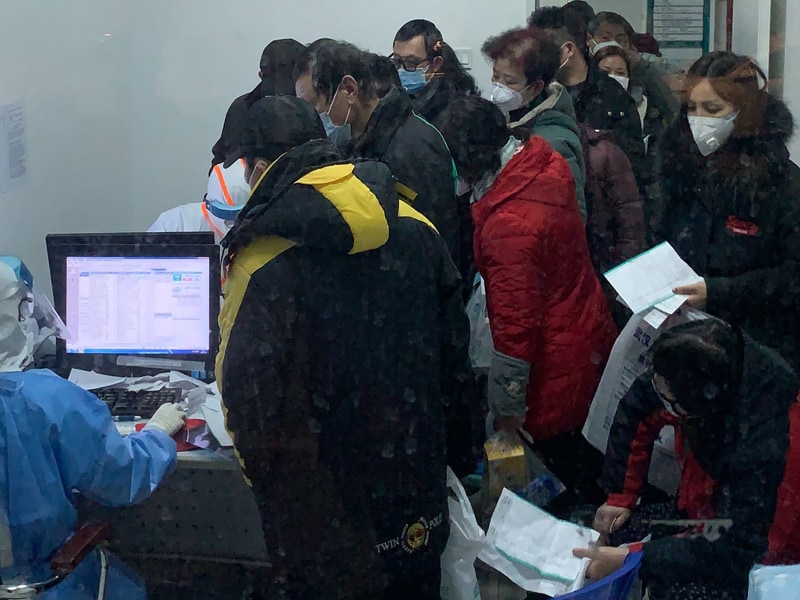
First known Covid-19 case was vendor at Wuhan market, scientist claims
A report, published in the prestigious journal Science, will revive, although certainly not settle, the debate over whether the pandemic started with a spillover from wildlife sold at the market, a leak from a Wuhan virology lab or some other way
 People are seen through a glass window standing near the desk of a healthcare worker while waiting for medical attention at a hospital in Wuhan, China, Jan. 28, 2020. A scientist who has pored over public accounts of early COVID-19 cases in China reported on Thursday, Nov. 18, 2021, that new analysis suggests that the first known patient sickened with the coronavirus was a vendor in a large Wuhan animal market.(Chris Buckley/The New York Times)
People are seen through a glass window standing near the desk of a healthcare worker while waiting for medical attention at a hospital in Wuhan, China, Jan. 28, 2020. A scientist who has pored over public accounts of early COVID-19 cases in China reported on Thursday, Nov. 18, 2021, that new analysis suggests that the first known patient sickened with the coronavirus was a vendor in a large Wuhan animal market.(Chris Buckley/The New York Times)
A scientist who has pored over public accounts of early COVID-19 cases in China reported Thursday that an influential World Health Organization inquiry had likely gotten the early chronology of the pandemic wrong. The new analysis suggests that the first known patient sickened with the coronavirus was a vendor in a large Wuhan animal market, not an accountant who lived many miles from it.
The report, published Thursday in the prestigious journal Science, will revive, although certainly not settle, the debate over whether the pandemic started with a spillover from wildlife sold at the market, a leak from a Wuhan virology lab or some other way. The search for the origins of the greatest public health catastrophe in a century has fueled geopolitical battles, with few new facts emerging in recent months to resolve the question.
The scientist, Michael Worobey, a leading expert in tracing the evolution of viruses at the University of Arizona, came upon timeline discrepancies by combing through what had already been made public in medical journals, as well as video interviews in a Chinese news outlet with people believed to have the first two documented infections.
Worobey argues that the vendor’s ties to the Huanan Seafood Wholesale Market, as well as a new analysis of the earliest hospitalized patients’ connections to the market, strongly suggest that the pandemic began there.
“In this city of 11 million people, half of the early cases are linked to a place that’s the size of a soccer field,” Worobey said. “It becomes very difficult to explain that pattern if the outbreak didn’t start at the market.”
©2019 New York Times News Service







